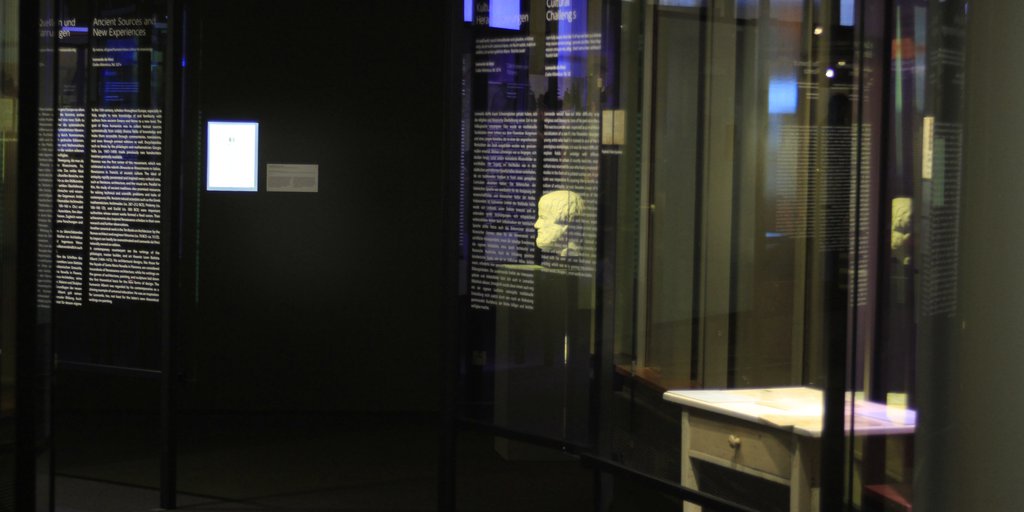
Cultural Challenges <
I am fully aware that the fact of my not being a lettered man may cause certain arrogant
persons to think that they may with reason censure me,
alleging that I am a man without letters. Foolish folk!
Leonardo da Vinci
Codex Atlanticus, fol. 327v. Translation: Mariangela Palazzi-Williams
Leonardo would have had little difficulty acquiring the religious and literary traditions of his period in the vernacular. This was to a certain extent expected as part of the intellectual socialization of a son from the Florentine bourgeoisie and a young artist who had been trained in one of the city’s most prestigious workshops. But it was far more difficult for him to explore fields of knowledge with different social connotations. In urban and courtly societies, access to high culture was reserved for those who had completed traditional studies in the form of a regulated curriculum. A command of Latin was imperative for acquiring the scientific and literary culture of antiquity. Leonardo became aware of his deficits, particularly in the cultivated surroundings of the Milanese court, and made great efforts to educate himself accordingly. He taught himself Latin and tried to master the current literary forms for conversation and written correspondence, all the while learning new technical and literary expressions to expand his vocabulary. Devising clever artistic subjects, such as those popular in the courtly milieu, also required a degree of familiarity with the subjects of classical education. Leonardo’s library reveals the growing diversity of fields of interest and work. This intellectual evolution, always closely linked with his own career, was facilitated not least by printing, which was rapidly gaining importance and made written works cheaper and more easily available.
Leonardo's Desk <
 | 47-b. Leonardo da Vinci. Second draft letter
1508 |

Two Draft Letters
Only a few letters by Leonardo have survived, among them the early “job application” to Ludovico Sforza
(67 ▲) und the draft letters shown here about the implementation of Leonardo’s royal privilege to take water from a Milan canal. The earlier collection fol. 1037v contains three letters on this matter addressed to various persons including Milan’s governor, Charles d’Amboise (center). This delicate balancing act between respectfulness and pragmatic goals, which includes strategic references to the painting Leonardo had just completed for the French king, appears in fol. 872r, reworked as a clean copy. The fact that Leonardo, who usually seemed so self-confident as an artist and scholar, made several drafts of a letter reveals his latent uncertainty about letter-writing. Leonardo tried to compensate for this by acquiring collections of model letters called Epistolari
(43 ■), written by authors with exemplary rhetorical skills.
References
Bambach, Carmen C. 2019a. Leonardo da Vinci Rediscovered. Bd. 3: The late Years 1506–1519. 4 Bde. New Haven / London: Yale University Press, 4–5, 262.
———. 2019b. Leonardo da Vinci Rediscovered. Bd. 4: Scholarly Apparatus to Volumes one, two, and three. 4 Bde. New Haven / London: Yale University Press, 362, Anm. 36.
Leonardo da Vinci. 1952. Tutti gli scritti. Scritti letterari. Herausgegeben von Augusto Marinoni. Mailand: Rizzoli, 212–214.
Manni, Paola. 2011. „Sulla duplice redazione di una lettera di Leonardo (Codice Atlantico, cc. 872r, 1037v)“. In Da riva a riva. Studi di lingua e letteratura italiana per Ornella Castellani Polidori, herausgegeben von Paola Manni und Nicoletta Maraschio. Quaderni della Rassegna 67. Florenz: Franco Cesati Editore, 273–284.
Marani, Pietro C., Hrsg. 2019. Lettres de Léonard de Vinci aux princes et aux puissants de son temps. Rom: De Luca Editori d’Arte.









